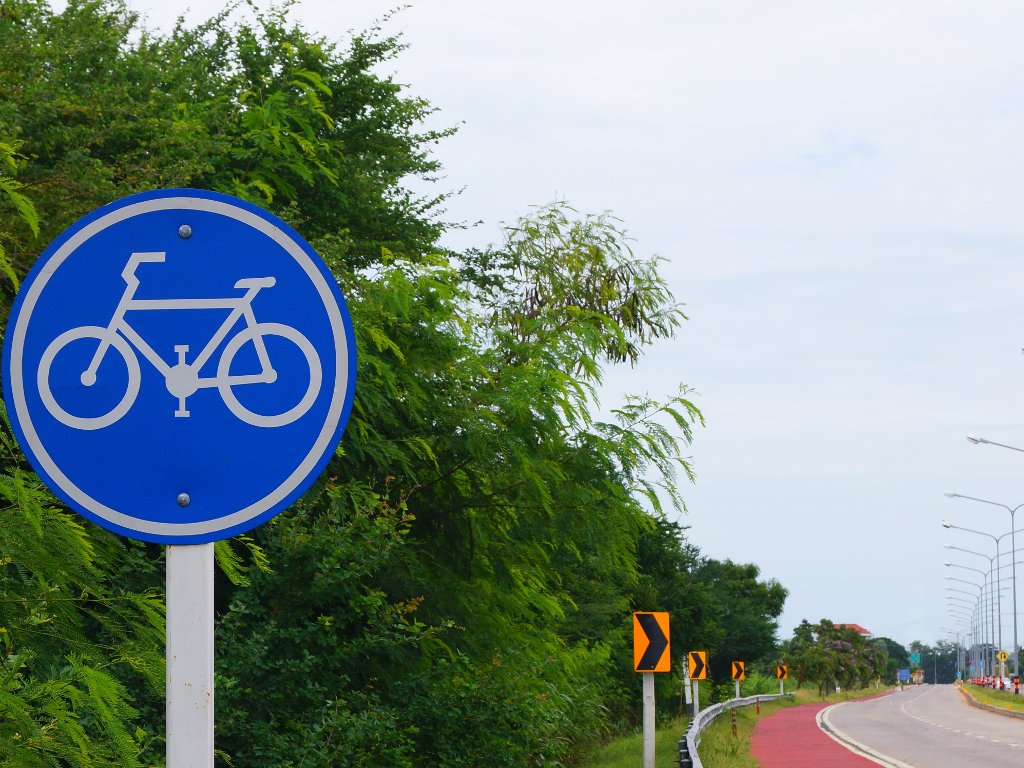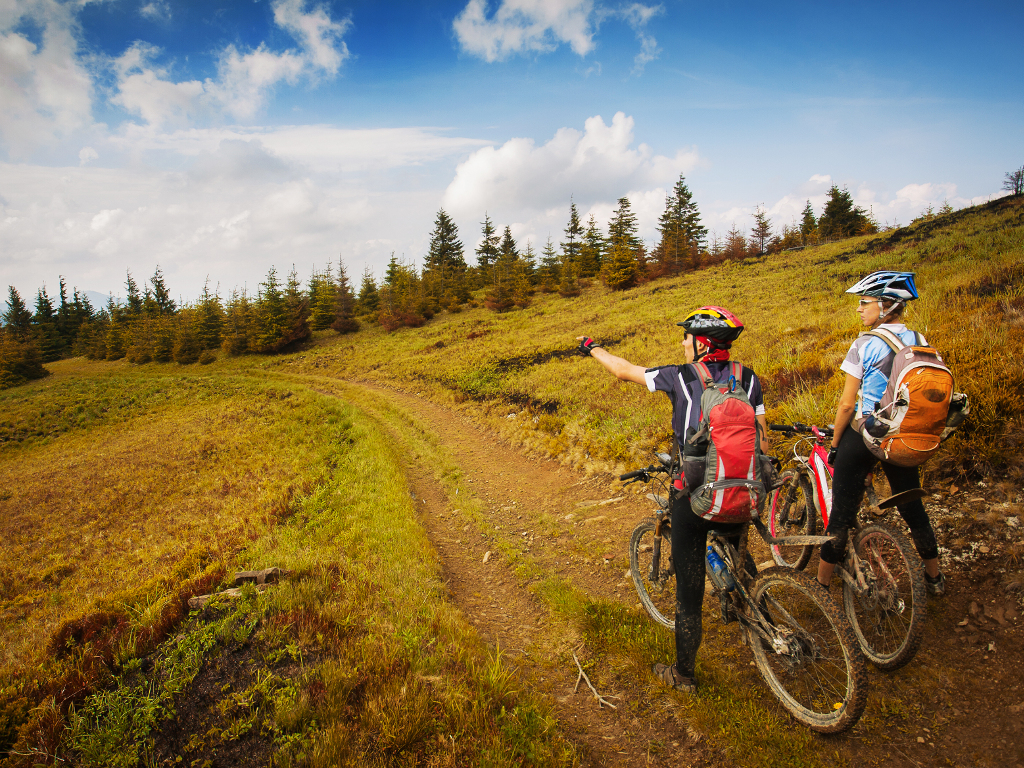Vojvodina to get network of bicycle centers – Development of locations for cycle tourists a task for local self-governments
After Croatia and B&H, the public bike system Nextbike announces arrival to Slovenia and Serbia. In Cacak, stations are being established, where bicycle renting will be enabled from July 1, and Pozarevac is looking for designers of cycle tracks.
These and similar news, which have been appearing in the media regularly in the past several months are only one of the proofs that cycling is increasingly popular throughout Serbia and that cyclists are trying to get the necessary infrastructure. At the same time, foreign tourists are increasingly interested in coming to these parts on two wheels.
It seems that these trends have been recognized by the PE Zavod za urbanizam Vojvodine (Urban and Spatial Planning Institute of Vojvodina), whose representatives presented the Study of the Cycle Route Network and Bicycle Centers of the AP of Vojvodina at the recently held Summer School of Urban Planning.
– This study encompasses the entire territory of Vojvodina, with its geographical characteristics of a plain and with several mountain and hill areas, such as Fruska Gora and parts around Subotica and Vrsac. This is a preliminary analysis of the activities carried out so far in implementing cycle routes, corridors and lanes within and outside populated areas. In a way, this is a preparation of the ground for the Provincial administration and the 45 local self-governments encompassed by the study to treat the matter of cycling and cycling tourism with utmost seriousness as an activity which will be very attractive and current in the upcoming period – Zoran Kordic of Zavod za urbanizam Vojvodine explains for eKapija and notes that both the AP of Vojvodina and the Republic of Serbia should recognize considerable benefits of these tourism trends, which are already becoming a standard in Europe, could bring.
In an interview given during the gathering organized by the Serbian Society of Urban Planners and the Republic Geodetic Authority from May 31 till June 2 in the ethno-village of Stanisici near Bijeljina, B&H, Kordic reminds that three cycle corridors pass through Serbia, with sections of all three in Vojvodina as well.
– These are the Danube Corridor, stretching along the length of the Danube (Corridor 6), the Tisa Corridor, along the eponymous river (Corridor 11) and the corridor established several years ago, which the European Cycling Union has named the Iron Curtain, which follows the former dividing line between the two blocs. It also passes through Vojvodina in the area of Vrsac and Bela Crkva. We are also planning the Sava Corridor, as a part of Vojvodina belongs to the Sava basin, which should pass through three states on the Sava's path – Slovenia, Croatia and Serbia. We have mentioned it in the study and it will certainly be pronounced an international corridor – Kordic says.
These and similar news, which have been appearing in the media regularly in the past several months are only one of the proofs that cycling is increasingly popular throughout Serbia and that cyclists are trying to get the necessary infrastructure. At the same time, foreign tourists are increasingly interested in coming to these parts on two wheels.
It seems that these trends have been recognized by the PE Zavod za urbanizam Vojvodine (Urban and Spatial Planning Institute of Vojvodina), whose representatives presented the Study of the Cycle Route Network and Bicycle Centers of the AP of Vojvodina at the recently held Summer School of Urban Planning.
– This study encompasses the entire territory of Vojvodina, with its geographical characteristics of a plain and with several mountain and hill areas, such as Fruska Gora and parts around Subotica and Vrsac. This is a preliminary analysis of the activities carried out so far in implementing cycle routes, corridors and lanes within and outside populated areas. In a way, this is a preparation of the ground for the Provincial administration and the 45 local self-governments encompassed by the study to treat the matter of cycling and cycling tourism with utmost seriousness as an activity which will be very attractive and current in the upcoming period – Zoran Kordic of Zavod za urbanizam Vojvodine explains for eKapija and notes that both the AP of Vojvodina and the Republic of Serbia should recognize considerable benefits of these tourism trends, which are already becoming a standard in Europe, could bring.
In an interview given during the gathering organized by the Serbian Society of Urban Planners and the Republic Geodetic Authority from May 31 till June 2 in the ethno-village of Stanisici near Bijeljina, B&H, Kordic reminds that three cycle corridors pass through Serbia, with sections of all three in Vojvodina as well.
– These are the Danube Corridor, stretching along the length of the Danube (Corridor 6), the Tisa Corridor, along the eponymous river (Corridor 11) and the corridor established several years ago, which the European Cycling Union has named the Iron Curtain, which follows the former dividing line between the two blocs. It also passes through Vojvodina in the area of Vrsac and Bela Crkva. We are also planning the Sava Corridor, as a part of Vojvodina belongs to the Sava basin, which should pass through three states on the Sava's path – Slovenia, Croatia and Serbia. We have mentioned it in the study and it will certainly be pronounced an international corridor – Kordic says.
The study proposes for other corridors to make up the planned network, through a regional spatial plan. This plan was also prepared by the experts from Zavod za urbanizam Vojvodine and defines a hierarchy of national cycle lanes, which connect points of local importance and also connects to international corridors.
– These are mostly lanes along the main canal network of the DTD hydrosystem, primarily navigable canals or those especially attractive due to the panoramas and the nature – Zlatica, Jegricka... All these national corridors are also local and are a kind of an internal network, which connects important points in towns and municipalities – eKapija's interviewee says.
Bicycle centers as support to cycle tourists
The study provides an overview of the current state and guidelines for further activities, while local self-governments were able to give their own suggestions for certain sections of the routes, which were then processed and shaped by Zavod za urbanizam Vojvodine. The product of this cooperation is a non-fixed cycle route network. It is provisional and will have to be further developed through additional planning documents, technical documentation and possibly through new analyses as well.
– When it comes to cycling centers, these are locations where we've placed emphasis on cycle tourism. These stations are points where cyclists should be able to rest and freshen up. Cycling is truly a special kind of tourism and transport and I must emphasize that cyclists are not too demanding. Certain surveys show that these are primarily people with stable finances and that this is a kind of a challenge and adventure for them – Kordic says.
Cyclists could rest at these centers, fix their bikes in case of minor malfunctions, to take a short break or sleep over, and these wouldn't be luxury or high-comfort services. The most important thing is for them to be able to continue their trip after a day or two at the most.
– These are mostly lanes along the main canal network of the DTD hydrosystem, primarily navigable canals or those especially attractive due to the panoramas and the nature – Zlatica, Jegricka... All these national corridors are also local and are a kind of an internal network, which connects important points in towns and municipalities – eKapija's interviewee says.
Bicycle centers as support to cycle tourists
The study provides an overview of the current state and guidelines for further activities, while local self-governments were able to give their own suggestions for certain sections of the routes, which were then processed and shaped by Zavod za urbanizam Vojvodine. The product of this cooperation is a non-fixed cycle route network. It is provisional and will have to be further developed through additional planning documents, technical documentation and possibly through new analyses as well.
– When it comes to cycling centers, these are locations where we've placed emphasis on cycle tourism. These stations are points where cyclists should be able to rest and freshen up. Cycling is truly a special kind of tourism and transport and I must emphasize that cyclists are not too demanding. Certain surveys show that these are primarily people with stable finances and that this is a kind of a challenge and adventure for them – Kordic says.
Cyclists could rest at these centers, fix their bikes in case of minor malfunctions, to take a short break or sleep over, and these wouldn't be luxury or high-comfort services. The most important thing is for them to be able to continue their trip after a day or two at the most.
– We have provided an overview of the features these stations should have, whether primary or secondary. The choice of location would be left to local self-governments, and our guideline and proposition is for the locations to be next to urban areas, interesting local features or tourist attractions.
Our interviewee expects the Province and local self-governments to now prepare the technical documentation for the locations that have already been proposed, to maintain and equip the tracks well, to install traffic signalization and to thereby attract attention from all cycle tourists, who can now inform themselves of all these details very easily online.
Kordic says that local self-governments should, then, prepare so-called urban sustainable mobility plans, focusing on connecting non-motorized traffic in towns and cities with cycle corridors outside populated areas and construction areas, thereby establishing an optimal network not just for tourists, but also for the local populace.
– Transit cycle tourism is the most important thing here, but this cycle network would certainly not only be there for tourists, as cycling is a seasonal activity meant for good weather, from spring till autumn. Perhaps we should also try to attract European funds in order to realize this concept we've come up with, but local self-governments still have the main initiative. They should get the ball rolling, they should lobby, advertise and raise everything to a much higher level than the one we're currently at – our interviewee emphasizes and announces that the preparation of a kind of a digital map is perhaps one of the next steps in the development of this concept, since we are living in a digital era.
M.A.
Our interviewee expects the Province and local self-governments to now prepare the technical documentation for the locations that have already been proposed, to maintain and equip the tracks well, to install traffic signalization and to thereby attract attention from all cycle tourists, who can now inform themselves of all these details very easily online.
Kordic says that local self-governments should, then, prepare so-called urban sustainable mobility plans, focusing on connecting non-motorized traffic in towns and cities with cycle corridors outside populated areas and construction areas, thereby establishing an optimal network not just for tourists, but also for the local populace.
– Transit cycle tourism is the most important thing here, but this cycle network would certainly not only be there for tourists, as cycling is a seasonal activity meant for good weather, from spring till autumn. Perhaps we should also try to attract European funds in order to realize this concept we've come up with, but local self-governments still have the main initiative. They should get the ball rolling, they should lobby, advertise and raise everything to a much higher level than the one we're currently at – our interviewee emphasizes and announces that the preparation of a kind of a digital map is perhaps one of the next steps in the development of this concept, since we are living in a digital era.
M.A.
Companies:
JP Zavod za urbanizam Vojvodine Novi Sad
UUS Beograd
Republički geodetski zavod Beograd
Etno selo Stanišići
Nextbike BiH Sarajevo
Tags:
Share:






Only logged-in users can comment.


 Izdanje Srbija
Izdanje Srbija Serbische Ausgabe
Serbische Ausgabe Izdanje BiH
Izdanje BiH Izdanje Crna Gora
Izdanje Crna Gora


 News
News









 LinkedIn
LinkedIn Copy link
Copy link




